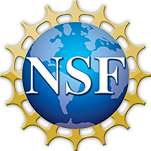Abstract
Candidate phyla (CP) are broad phylogenetic clusters of organisms that lack cultured representatives. Included in this fraction is the candidate Parcubacteria superphylum. Specific characteristics that have been ascribed to the Parcubacteria include reduced genome size, limited metabolic potential, and exclusive reliance on fermentation for energy acquisition. The study of new environmental niches, such as the marine versus terrestrial subsurface, often expands the understanding of the genetic potential of taxonomic groups. For this reason we analyzed twelve Parcubacteria single amplified genomes (SAGs) from sediment samples collected within the Challenger Deep of the Mariana Trench, obtained during the Deepsea Challenge (DSC) Expedition. Many of these SAGs are closely related to environmental sequences obtained from deep-sea environments based on 16S rRNA gene similarity and BLAST matches to predicted proteins. DSC SAGs encode features not previously identified in Parcubacteria obtained from other habitats. These include adaptation to oxidative stress, polysaccharide modification, and genes associated with respiratory nitrate reduction. The DSC SAGs are also distinguished by relative greater abundance of genes for nucleotide and amino acid biosynthesis, repair of alkylated DNA and the synthesis of mechanosensitive ion channels. These results present an expanded view of the Parcubacteria, among members residing in an ultra-deep hadal environment.

